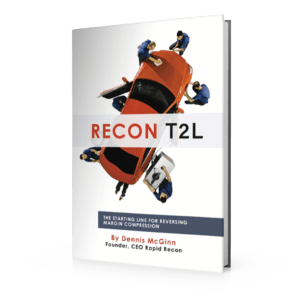05 Aug Flow Gross From Recon to Your Bottom Line
If you still run your recon department on “gut feel” and not metrics, you’re losing money. Metrics — hard performance data — is the road map to flowing gross from your recon to your bottom line.
Manage by the facts and you’ll flow significant gross to your bottom line. This article explains how.
How’s Your Recon?
Every week, I talk to dozens of dealership managers. These conversations convince me that gut-feel management continues to rule. The solution is explaining how recon metrics influence gross.

When the used car manager measures results using retail gross dollars, and not true gross dollars, a false outcome is painted. True gross results when two key metrics are subtracted from retail gross, which are holding costs multiplied by each vehicle for each day.
Because many managers aren’t clear about holding costs, they tell me their recon is running efficiently, when it’s likely not. A large Midwest dealership believed it was managing a five-day recon cycle, which when metrics were applied showed them at 10 days.
Unfortunately, a 10-plus day recon is common, and doing nothing to shorten the cycle is a gross killer.
Reduce Holding Costs
A typical store that sells 100 used vehicles a month at an average time-to-line (T2L) cycle of 10 days incurs $384,000 a year in absorbed gross due to that long cycle and daily holding costs. Reducing the T2L cycle to a very achievable four days radically frees up gross with no expense cutting or selling more cars.
Here’s the math, using a holding cost of $32 per day per unit (suggested by NCM Associates’ 20 Group clients): 100 cars per month X $32 per day X 12 months X a four-day recon cycle equals $153,600 in holding costs, not $384,000 from a 10-day cycle as in the previous example — a difference of more than $230,000 in freed-up gross.
The vast majority of dealerships with a “four-day” T2L dialed in actually started with an average recon cycle time of more than 10 days, so that $230,000 per year in added gross calculation shows a conservative result.
Opportunity Knocks
Technology makes automating processes so much more predictable, measurable and efficient. The steps below to improved recon operations, however, can be executed manually, with data from your dealer management system.
Here’s a plan for isolating gross from recon so it can flow to your bottom line:
- Open your eyes — Understand reconditioning as an assembly line: Vehicles move along as individuals perform functions on them. Anything that disrupts this flow — waiting for parts approvals, forgetting where a car is parked, over-conditioning — add days and costs. Where can you remove or streamline bottlenecks and delays?
- Watch the clock — Focus on productivity. The rapid flow of cars through recon to standards is the key metric. Approve a more costly part if its ready availability means getting the vehicle frontline ready sooner. Set a daily goal of completed vehicles — and pay techs according to that goal, not hours. Time is not a friend of recon, so shave time where possible.
- Talk back — If you’re the used car manager, I encourage you to promptly talk back to your service or recon manager when they call, text or email needing spending approval. Every day’s delay is $32 less gross margin — a delayed approval is not just wasting time; it’s wasting dealership resources.
- Pre-approve repairs — Dealers can eliminate cost from recon by getting the used car manager to agree to a pre-approved spending limit. Access 24 months’ recon reports from your DMS. Categorize repair costs by mileage ranges — under 20K, under 50K, over 75K, etc. Average dollar recon repairs for those vehicles by category; these are recon’s pre-approval spend levels.
- Share the flow — Tracking on spreadsheets, whiteboards or Post-It notes shares with others the work in progress, but keeping these static reports fresh and accurate is difficult. Software that structures processes and holds personnel accountable for time and production goals improves flow, visibility, communications and time-to-market. It tracks where vehicles are in the process — even those forgotten in a far corner of the lot — so no car gets left behind.
Managers who focus on reducing days to reduce holding costs are often surprised at how much efficiency can be driven into, and cost out of, reconditioning. Shoot for a four-day (or less) time-to-market and watch gross flow to your bottom line. Let me know your results.
Use this link to get more information and get your copy of Dennis McGinn’s book, Recon T2L:


Sorry, the comment form is closed at this time.